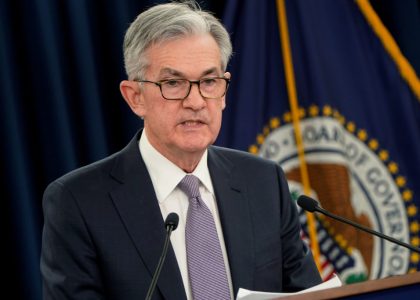We don't normally spend time patting ourselves on the back as we're usually too busy with the next trade. Today, however, we have no new trades primarily thanks to letting the winners we've recently published here, continue to run. Therefore, we'll update our last several posts here at Equities.com and explain the process of our support and resistance based swing trading technique using the Commitments of Traders report.
First, the links to the trades published here at Equities.com for your cross referencing.
9/6 - There's a Better Way to Catch Swing Trades
Buy @ $2.09. Currently $2.22
9/13 - Is there Value to be Found in the Grain Markets?
Hasn't traded more than $.05 lower since publication.
9/15 - Hogs Rooting for a Bottom
Didn't bottom for another three weeks.
9/20 - Big Bond Traders Betting on Lower Yields
Bottomed the next day and rallied more than $5k.
9/22 - Here's How Big Traders Got it Right on the FOMC's Latest Decision
Recap of 9/20's commentary.
9/27 - Canadian Dollar Weakness is a Buy
Steady since publication.
10/4 - A Classic Play in Copper Futures
Nearly $.10 decline over the next week.
10/11 - Natural Gas Unsupported at Elevated Levels
Peaked three days later and has declined by more than $6k.
10/18 - Euro FX Should Move Higher in Normal Trading
Slightly higher. Bottomed five days later.
Ironically enough, the first article explains the technique we use. We chose the copper market for this example to compare the one update we've made in our approach over the last year; the addition of our "COT Ratio" filter. The filter combines the net and total positions of the large speculators and commercial traders into a Dollar based weighting. There are two primary advantages of this approach. First, it accounts for bias within the different markets. A deep analysis of Commitments of Traders data reveals that some futures markets tend to consistently carry long or, net short positions as the result of the hedging mechanisms and business models behind within a given industry. Secondly, provides a convenient measure of bubble mentality. We droned on at length this summer about the all-time speculative positions being carried in the metal markets with silver reaching 4.5 long contracts for every long position and gold reaching a ratio of nearly 6:1. This was the basis for our bearishness this summer.
![COT Free Trial[1] copy](https://waldocktrading.com/wp-content/uploads/2016/09/COT-Free-Trial1-copy.jpg) The commercial traders are value-based traders. Therefore, the more a market moves beyond their value forecast, the greater the action, they'll take to lock in what they see as alpha. This behavior is the same whether it is commodity producers selling forward production or commodity processors locking in future supplies at a given price level. They are both using the commodity futures markets to lock in profits above their normal operating levels. However, there is one big caveat we must remain aware of, and that is the commercial traders' buying or selling capacity within a given market. Once the economic needs of the businesses are satisfied, they withdraw from the markets, and the speculators start their run. This is why we also track the current total commercial position compared to its historical levels.
The commercial traders are value-based traders. Therefore, the more a market moves beyond their value forecast, the greater the action, they'll take to lock in what they see as alpha. This behavior is the same whether it is commodity producers selling forward production or commodity processors locking in future supplies at a given price level. They are both using the commodity futures markets to lock in profits above their normal operating levels. However, there is one big caveat we must remain aware of, and that is the commercial traders' buying or selling capacity within a given market. Once the economic needs of the businesses are satisfied, they withdraw from the markets, and the speculators start their run. This is why we also track the current total commercial position compared to its historical levels.
Commercial trader behavior in the commodity markets also shows up in their awareness of their market's seasonality. It becomes a bit of a "chicken and egg" situation where it becomes tough to distinguish where seasonality takes over from the commercial traders' actions ahead of the pending seasonal move. This is best illustrated in the natural gas article.
Finally, we let the conspiracy theorist out. Commercial traders tend to be the most well-informed trading group among the traders tracked in the Commitments of Traders report. We've shown time and again, how their actions preceding a momentous announcement or, even a Black Swan event indicate their deeper knowledge of the market, they're trading. The Brexit action was a classic example of this behavior on a macro scale. This brings us to the current situation if there is one. Commercial traders have been net buyers in the Treasury markets on declines over the last three weeks. They apparently feel that the 160-164 area represents good value. However, it is important to note that much of their buying has been short covering from the massive short position they created this July. The FOMC meeting on Tuesday, November 2nd could be interesting. The recent action indicates that any further weakness should be a buying opportunity.
Our approach is rather simple in premise. If you'd like to know more about our Discretionary and Mechanical Commitment of Traders based commodity programs, please visit CotSignals.com.





